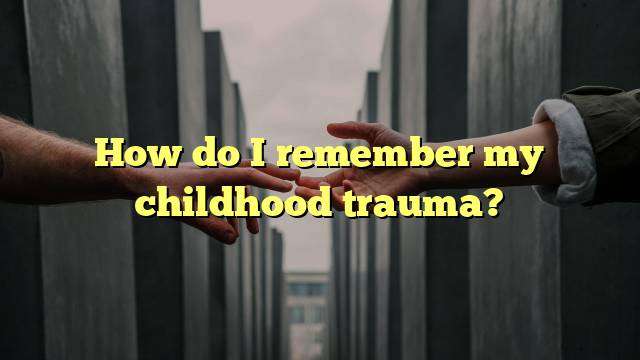Dealing with Childhood Trauma
Childhood trauma can be an incredibly difficult thing to manage, and it’s essential to understand how to do so in order to ensure that it doesn’t become a problem in adulthood. While it’s impossible to erase the trauma, there are a few things that can be done to help remember and manage it.
Talking About the Past
Talking about the past is a great way to start the healing process. Discussing experiences you’ve had and other important events can often help keep them fresh in your mind, so that you can more easily process and reflect upon them.
It’s important to find a safe, comfortable space in which to discuss these issues, so that you can be free to express yourself without fear of judgement or criticism. If you’re not comfortable talking to family or friends, it might be helpful to speak to a therapist or psychologist, who will be able to offer impartial advice and guidance.
Looking at Photos
Looking at photos can be a great way to bring back memories of the past. By looking at images of people, places, and events that were present in your life before the trauma, you can help to jog your memory and bring back some of the details that you may have forgotten.
It’s important to remember that looking at photos can also be a trigger for some people, so it’s important to take caution when doing so. If you find that looking at photos is causing you distress, it might be best to take a break and try again at a later date.
Visiting Familiar Areas
Visiting familiar areas can also be a great way to bring back memories and help to process trauma. Going back to places where the trauma occurred or similar places can often help to jog your memory and put things into perspective.
It’s important to remember that visiting these places can also be extremely difficult, so it’s important to take caution. If it’s too difficult to visit the area yourself, you can always try visiting a place that reminds you of it and see how that makes you feel.
Continuing to Learn
Continuing to learn about trauma, and exploring different ways to manage it, is an essential part of the healing process. There are many different books, websites, and other resources available that can help provide information and guidance about managing trauma.
It’s important to remember that everyone’s experience of trauma is different, so it’s important to find the resources and techniques that work best for you. A therapist or psychologist can often be a great source of information and advice, and can help to provide tailored guidance for your specific needs.
Conclusion
Dealing with childhood trauma can be an incredibly difficult thing to manage, and it’s essential to understand how to do so in order to ensure that it doesn’t become a problem in adulthood. While it’s impossible to erase the trauma, there are a few things that can be done to help remember and manage it. Talking about the past, looking at photos, revisiting familiar areas, and continuing to learn are all great ways to help process and manage childhood trauma. It’s important to remember that everyone’s experience of trauma is different, so it’s important to find the resources and techniques that work best for you.



